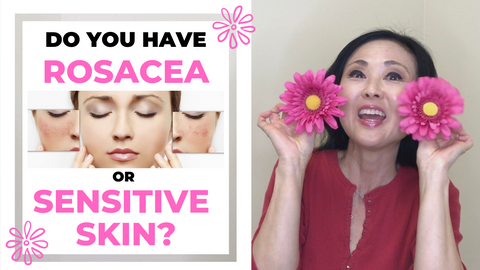The unknown truth of facial cleansing wipes, micellar water and cleansing oil is that although they are seen as “cleansing” products, the truth is that they are not as effective in cleansing the skin as they are at just breaking down the dirt, oil, and some make up.
The Unknown truth of Facial Cleansing Wipes:
Facial “Cleansing ” wipes are definitely more convenient to use, you don’t need a sink, they can be great while you are camping or at a place where a sink is not readily available…..or when you are just too tired to remove make up and wash your face.
The primary purpose for cleansers is to remove oil, make up, and dirt from the skin, along with epilthileal debris. All dirt when on the skin becomes oily when combined with sebum.
Oily dirt becomes difficult to remove without the help of cleansers.
Cleansers consist of molecules that on one end is lipid soluble (dissolves in oil) and the other end is water soluble (dissolves in water).
One is is called lipophillic (lipid or oil loving) and the other end is called hydrophillic (water loving).
The oil loving part of the molecule attracts and dissolves the oily dirt on the skins surface.
When water is added during rinsing, the water mixes with the water loving end of the molecule and the oily dirt is washed away.
If you don’t add enough water, the dirt residue will stay on the skin.
All cleansers and soap work in the same fashion.
Why facial cleansing wipes may not be truly “cleansing” your skin is because without any addition of water, the cleansing wipe will dissolve the dirt from the oily portion of the cleansing molecule and that will get onto the wipe.
So without water, the dirt cannot be completely removed from the skin and rinsed away.
Although facial cleansing wipes are convenient, and a product to have such as camping or in an area where water is not easily accessible, a double cleanse in which the second cleanse that would be able to rinse away the oily dirt and debris, is recommended.
***If you are getting bumpy skin due to using Micellar Water, Facial Cleansing wipes and or cleansing oils, Please look into these products to help you with bumpy skin:
Cleanser for bumpy skin due to shaving or waxing
Cleanser for bumpy skin-red bumps, red bumps with pus, and or red bumps
Leave on Serum for bumpy skin due to waxing, shaving, or oily residue from products
Micellar Water: Best Cleanser for Oily Skin?
Micellar water has grown in popularity in the recent years. It was rather a new concept in the mainstream. Micellar water is a type of cleanser that places the saponification molecule into a circular form. (Refer to video)
These cleansers are mostly composed of water in which tiny particles of oil (micelles) are dispersed with the lipophilic (oil loving) ends facing inside and the water loving (hydrophilic) pointing outwards.
The oil loving part absorbs the oily dirt and suspend it in the water. This way the oily dirt can be wiped off or rinsed off with very little water.
Due to its higher oil content, micellar water is inefficient at removing heavy make up and waterproof mascara. This product necessitates a double cleanse to for a more thorough removal of oily dirt and make up, including epithileal debris.
In some cases, some of my clients saw an increase in oiliness on their skin and some saw an increase in break outs.
Whether you decide to use micellar water as a part of your skin care regimen, for the second cleanse, use a cleanser that is suitable for your specific skin condition.
If you have unbalanced skin or have Rosacea,
and prefer a gel foaming cleanser, this cleanser is 99% organic Ormedic Balancing Cleanser Review
If you used micellar water because you wanted to remove excess oil and reduce break outs, here are a few suggestions:
If you have normal to oily skin and some break outs, this cleanser is a concentrated foaming gel cleanser that does NOT use any drying sulfates.
If you are looking for a cleanser that has BHA to exfoliate, here is a review on the Image Clear Cell Cleanser-This does have the gentle form of sulfate that is not as drying. Works well if you have more break outs.
Cleansing Oils: Best for Dry Skin or Oily Skin?
Cleansing oil obviously have a high lipid content to replenish or restore the skins barrier.
However some cleansing oils may contain lipids that are very different from those found in the skins lipid barrier that can leave oily residue that may lead to congestion and acne break outs.
Dry and sensitive skin may prefer oils but because of the oily residue it may leave behind, it is important to still thoroughly cleanse and exfoliate to avoid bumpy skin.
***If you are looking for a leave on facial oil that is NOT for cleansing: Best Facial Oils for Dry Skin, Glowing Skin and Acne skin
Cleansing oils are effective in breaking down and dissolving liquid make up especially on oily skin but it is NOT effective in removing the oily dirt and make up because to needs to be rinsed off.
Therefore, using a cleansing oil that is water soluble is important. So when you add water to it, it starts to break down and look almost milky.
The double cleanse method in which using a different cleanser to remove the cleansing oil is advised. Using water “soluble” oil or water dispersible oil such as jojoba oil, sunflower oil, grapeseed oil ,apricot kernel oil and olive oil (to some extent) are oils that when water is added, it can be rinsed off the skin.
Cleansing oils are generally not recommended for very acneic skin.
Have you used any facial cleansing wipes, micellar water, and/ or cleansing oil?
Please share in the comments below what your experience was with this.




